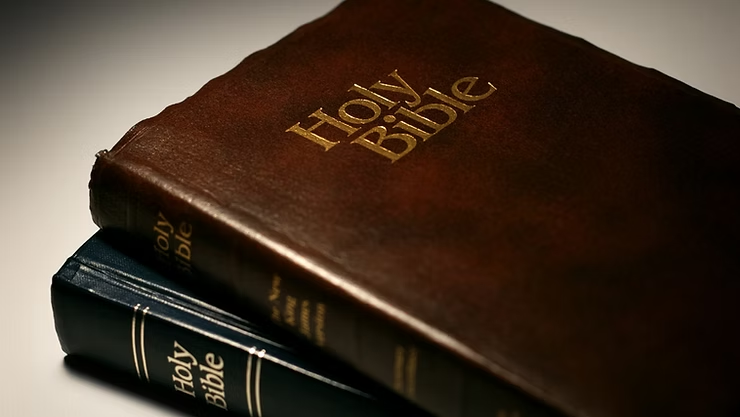Differences Between the Protestant and Catholic Bibles
The Protestant Bible contains 66 books, whereas the Catholic Bible includes 73 books, reflecting differences in historical compilation, canonization, and translation philosophy. Understanding these distinctions is vital for both believers and seekers.
Historical Background
Origins of Protestantism
The Protestant movement began in the 16th century as a response to perceived corruption in the Catholic Church. Reformers like Martin Luther emphasized Scripture’s authority and salvation by faith alone, spreading their ideas widely thanks to the printing press and leading to various Protestant denominations.
Origins of Catholicism
Catholicism traces its roots to the early Church following Jesus’ resurrection. It has significantly influenced religion, culture, and society through centuries, emphasizing Church authority, tradition, liturgy, and sacraments despite historical divisions like the Great Schism and Reformation.
The Reformation
This 16th-century movement, led by Luther and others, challenged Catholic doctrines and practices, advocating for “sola scriptura” or Scripture as the ultimate authority, resulting in religious and political upheaval and the formation of Protestant churches.
Translation of the Bible
Bible translation has evolved with missionary activity and reformers translating Scriptures into vernacular languages such as German and English. Notable translations include the Revised Standard Version and the New International Version, balancing literal and dynamic equivalence philosophies.
Canonization of the Bible
Development of the Old Testament Canon
The Catholic Old Testament includes Deuterocanonical books, based on the Septuagint, while Protestant Bibles follow the narrower Jewish canon, leading to the key difference in the number of books.
Development of the New Testament Canon
The New Testament canon was gradually recognized by early Christians; councils acknowledged existing authoritative texts rather than creating new ones.
Differences in Canonization
- Catholics include Deuterocanonical books in the Old Testament; Protestants do not.
- Both share the same New Testament books, though interpretations vary.
- Catholics rely on Church magisterium for interpretation, Protestants emphasize individual understanding.
Books of the Bible
Deuterocanonical Books
These seven books, including Tobit and Maccabees, are recognized as canonical by Catholics but excluded by Protestants, creating a significant scriptural distinction.
Apocryphal Books
Apocryphal texts are early Christian writings not included in the New Testament and are distinct from Deuterocanonical books.
Protestant vs Catholic Bible Books
The difference in books mainly lies in the Old Testament; Catholic tradition grounds the inclusion of extra books in papal teaching and tradition.
Translation Differences
Translation Philosophy
- Literal translation: Faithfully captures original wording and structure.
- Dynamic equivalence: Conveys meaning naturally for contemporary readers.
Different translations balance these approaches according to translator goals.
Textual Variants
Variations in manuscripts, particularly Greek texts, exist but mostly have minor impacts. Key text-types include Alexandrian and Western, both preserving early readings with subtle differences.
Influence of Tradition
Protestants view tradition as subordinate to Scripture and open to change, while Catholics see tradition and Scripture as equally authoritative, transmitted through Church teaching and sacraments.
Interpretation and Authority
Role of Tradition
Protestants prioritize Scripture as the sole authority, whereas Catholics hold Scripture and tradition jointly with equal reverence.
Role of Church Hierarchy
The Catholic Church’s hierarchical structure, led by the Pope, ensures doctrinal unity and governance, influencing religious and societal domains.
Interpretation by the Faithful
Interpretations differ based on hermeneutics, culture, and theology, with Catholics and Protestants maintaining distinct views on papal authority and scriptural application.
Impact on Religious Practices
Worship and Liturgy
Catholic worship is highly liturgical with Eucharist central, while Protestant services vary widely, often focusing on sermons and praise.
Sacraments and Rituals
Catholics recognize seven sacraments integral to grace and salvation, including infant baptism, whereas many Protestants observe two ordinances symbolically.
Devotional Practices
Despite differences, both traditions emphasize growing closer to God and can benefit from mutual understanding through ecumenical dialogue.
Conclusion
The Protestant and Catholic Bibles differ mainly in Old Testament content, reflecting distinct historical and theological backgrounds. Believers are encouraged to approach both with discernment and openness to foster unity.
Frequently Asked Questions
- Why do Protestant and Catholic Bibles differ in books? Their canons were shaped by different historical and theological decisions.
- What are the Deuterocanonical Books? Books included in the Catholic Old Testament but excluded by Protestants.
- Why did Martin Luther remove certain books? He questioned their original Hebrew authority during the Reformation.
- Can Catholics read the Protestant Bible? Yes, but with awareness of differences and guided interpretation.
- Which Bible is more accurate? Both have strengths depending on manuscript reliability and translation methods.
- What role does tradition play in Catholicism? Tradition is equally authoritative alongside Scripture for faith and practice.
- Why are Old Testament differences significant? They arise from choosing Septuagint versus Jewish canon as the basis.
- How do these differences affect worship? They influence liturgy, sacraments, and devotional customs.

